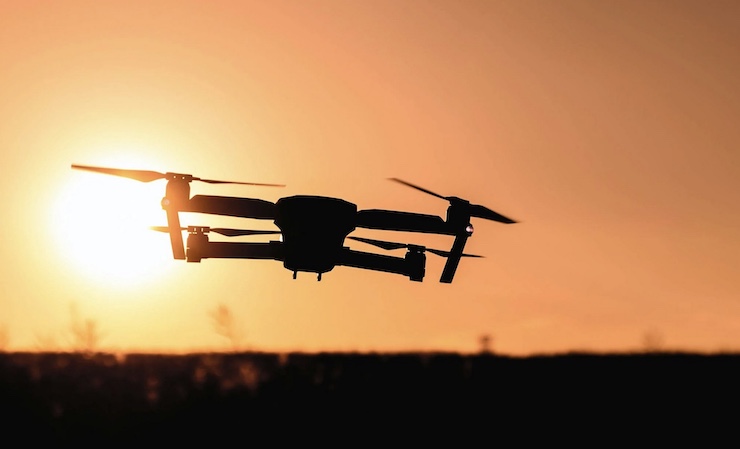The Drone Revolution and the Fourth Industrial Revolution

Beginning in Great Britain, eventually spreading throughout the modern world, 1760 was the start of the First Industrial Revolution. This period marked an economic shift based on new, emerging methods to provide people not only with the necessities of daily life but also with products they never knew they needed. Advancements in iron production, steam power, and textile manufacturing increased job opportunities and influenced consumer habits.
The late 1800s welcomed the Second Industrial Revolution, which saw a boom in the production of metals and chemicals, as well as the ability to mass produce goods in factories. By the 1970s, the world was entering the Third Industrial Revolution, also known as the Digital Revolution. This period shaped how digital technology began to develop into what we all rely on today.
It included the birth of semiconductors, mass communication systems, computers, and the internet. The impact of the Digital Revolution allowed the world to become more interconnected. Today, we are entering what is being called the Fourth Industrial Revolution, or 4IR. Our technologies are advancing in ways that were once considered science fiction but are now becoming reality.
Leading up to 4IR was a smaller revolution, a sort of catalyst for what we are seeing now. This was the Drone Revolution, which began in the early 2010s and has since merged into the Fourth Industrial Revolution. Drones were initially developed around the same time commercial airplanes were introduced. These unmanned aircraft were military experiments designed to harness the power of airborne weaponry without risking the lives of soldiers. By the 1990s, these experiments were actively used by the U.S. Armed Forces in Middle Eastern conflicts, marking the public’s first major introduction to drones.
For the next two decades, drone use was limited to military operations and a small group of hobbyists. However, this quickly changed as drone technology improved and manufacturing costs dropped. Between 2010 and 2013, relatively affordable drones from manufacturers like DJI became commercially available. This sparked greater interest in drone applications, prompting agencies like the Federal Aviation Administration to begin forming regulatory measures for safely incorporating drones into national airspace.
Soon, the potential for drones to enhance multiple sectors became apparent. Today, drones are used across countless commercial industries such as agriculture, law enforcement, education, entertainment, logistics, infrastructure, and real estate, to name a few in a continuously growing list. The current global drone market is estimated to be worth between $73 billion and $95 billion and is expected to grow at a 14.3% CAGR, reaching $157 billion by 2030. For many years, the majority of the drone market was supported by military spending, but as the Drone Revolution has taken flight, this trend has shifted.
In 2015, the global military drone market was valued at approximately $9.4 billion, while the global commercial drone market was estimated at only around $609 million. In 2024, the global military drone market was valued between $14.14 billion and $36.14 billion, while the commercial drone market was valued between $29.91 billion and $56.22 billion. It is important to note that the value of the commercial drone industry encompasses all commercial enterprises, while comparatively, the military market represents one singular entity per nation.
The expansion of the Drone Revolution is a key component of 4IR, as it embodies the core principles of this era: automation, connectivity, data-driven intelligence, and the fusion of digital and physical technologies. Drones have become a testbed for much of what defines 4IR as they increasingly push the boundaries of automation, AI, connectivity, technological convergence, and the improvement of global systems. In the United States, the media and entertainment industries, followed closely by the agricultural industry, are among the biggest supporters of the Drone Revolution. One of the most exciting and fastest-growing avenues being explored is the logistics industry, with companies like Amazon and Walmart looking to fully embrace drone delivery operations.
Each Industrial Revolution has helped shape the future, ultimately paving the way for the current revolution the world is now embracing. As drones continue to evolve, they are not only transforming industries but also redefining how we interact with technology on a global scale. The Drone Revolution is no longer a separate movement, it is a driving force within the Fourth Industrial Revolution, accelerating innovation and reshaping the future of work, commerce, and connectivity.
|